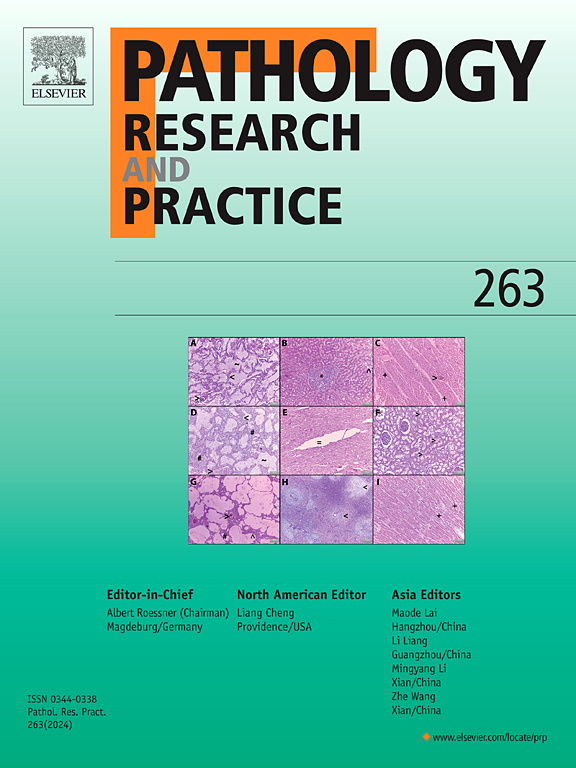靶向三阴性乳腺癌的肿瘤微环境:生物学见解和治疗机会
IF 3.2
4区 医学
Q2 PATHOLOGY
引用次数: 0
摘要
三阴性乳腺癌(TNBC)是一种侵袭性、异质性的乳腺癌亚型,其特征是缺乏雌激素受体、孕激素受体和HER2的表达。尽管最初对化疗敏感,但TNBC经常复发,近一半的患者发生远处转移,特别是内脏器官和大脑。近年来,人们越来越关注肿瘤微环境(TME)作为疾病进展、免疫逃避和治疗耐药性的关键驱动因素。TME由免疫和基质细胞、细胞外基质成分和影响肿瘤行为和形成对治疗反应的可溶性介质的动态网络组成。在这篇综述中,我们全面概述了TNBC中TME的细胞和分子组成,强调了关键的预后和预测标志物,并讨论了针对TME成分的新兴治疗策略。了解肿瘤及其微环境之间的复杂串扰对于未来开发有效、个性化的TNBC治疗方法至关重要。本文章由计算机程序翻译,如有差异,请以英文原文为准。
Targeting the tumor microenvironment in triple-negative breast cancer: Biological insights and therapeutic opportunities
Triple-negative breast cancer (TNBC) is an aggressive and heterogeneous subtype of breast cancer characterized by the absence of estrogen receptor, progesterone receptor, and HER2 expression. Despite initial chemosensitivity, TNBC often relapses, and nearly half of patients develop distant metastases, particularly to visceral organs and the brain. In recent years, growing attention has been given to the tumor microenvironment (TME) as a critical driver of disease progression, immune evasion, and therapeutic resistance. TME is composed of a dynamic network of immune and stromal cells, extracellular matrix components, and soluble mediators that influence tumor behavior and shape response to treatment. In this review, we provide a comprehensive overview of the cellular and molecular composition of the TME in TNBC, highlight key prognostic and predictive markers, and discuss emerging therapeutic strategies aimed at targeting TME components. Understanding the complex crosstalk between the tumor and its microenvironment is essential for developing effective, personalized approaches to managing TNBC in the future.
求助全文
通过发布文献求助,成功后即可免费获取论文全文。
去求助
来源期刊
CiteScore
5.00
自引率
3.60%
发文量
405
审稿时长
24 days
期刊介绍:
Pathology, Research and Practice provides accessible coverage of the most recent developments across the entire field of pathology: Reviews focus on recent progress in pathology, while Comments look at interesting current problems and at hypotheses for future developments in pathology. Original Papers present novel findings on all aspects of general, anatomic and molecular pathology. Rapid Communications inform readers on preliminary findings that may be relevant for further studies and need to be communicated quickly. Teaching Cases look at new aspects or special diagnostic problems of diseases and at case reports relevant for the pathologist''s practice.

 求助内容:
求助内容: 应助结果提醒方式:
应助结果提醒方式:


